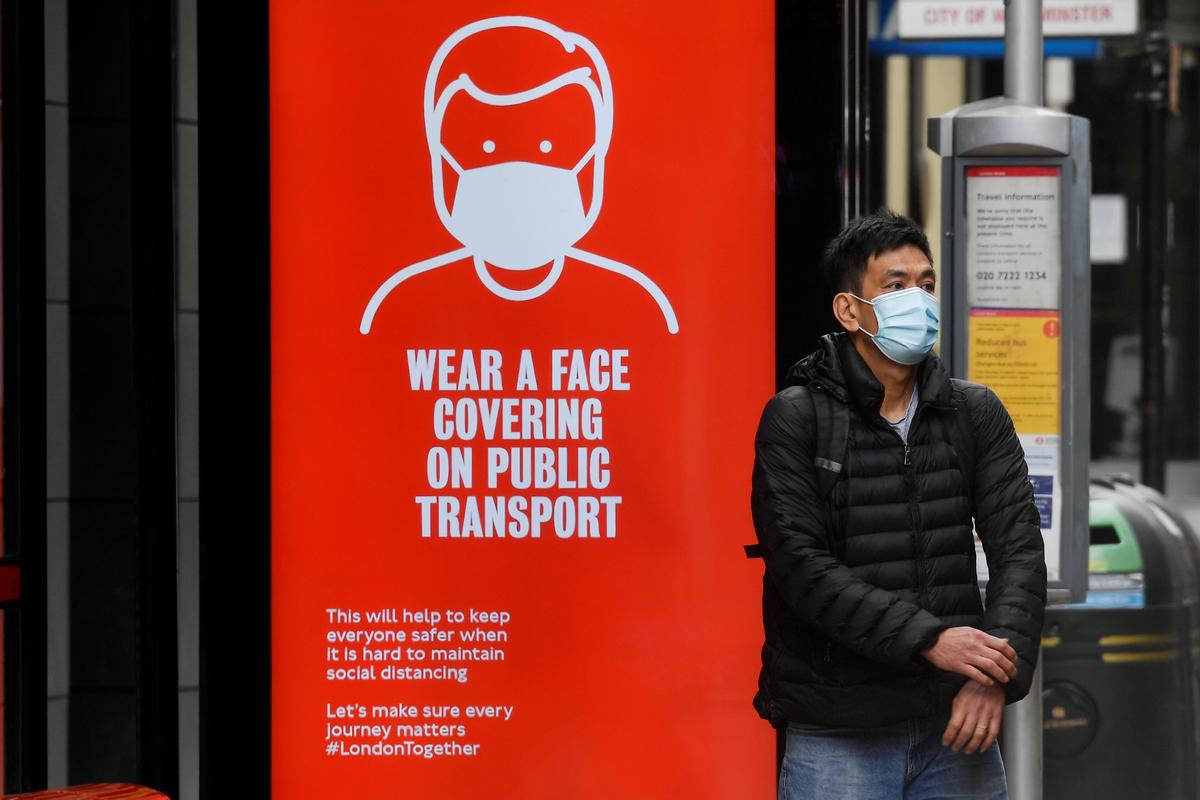(Reuters) – The World Health Organization (WHO) updated its guidance on Friday to recommend that governments ask people wear fabric face masks in public places to curb the spread of the pandemic COVID-19 disease caused by the new coronavirus.
FILE PHOTO: A man wearing a mask waits at a bus stop in London, following the outbreak of the coronavirus disease (COVID-19), London, Britain, June 5, 2020. REUTERS/Toby Melville/File Photo
Here are some details on the new advice:
WHY THE CHANGE?
– The WHO says the widespread use of face masks or coverings by the general public is still not yet supported by high quality or direct scientific evidence.
– But it says a growing amount of observational evidence from several countries that have ordered or recommended the wearing of masks, as well as the difficulty of social distancing in many settings, is enough for it to change its advice.
WHEN SHOULD YOU WEAR A MASK?
The WHO recommends the wearing of non-medical masks by:
– Everyone in public settings such as stores, at work, social or mass gatherings, and in closed settings such as schools or places of worship.
– People living in cramped conditions, such as in refugee camps or slums.
– On public transport.
WHAT KIND OF MASK?
Because of the risk of diverting critical resources from health workers, the WHO says medical masks should be reserved for healthcare professionals and people in at-risk groups. Everyone else should use what it terms non-medical or fabric masks. Here is some of its advice on mask choice:
– Choose materials that capture droplets but remain easy to breathe through.
– Avoid stretchy materials, because stretching may increase pore sizes, and preferably use a fabric that can be washed at 60C (140F) or higher.
– A minimum of three layers is needed, including an absorbent inner layer, touching the mouth, and a synthetic outer layer that does not easily absorb water.
– Wash frequently, at the highest temperature possible, and don’t share.
Compiled by Alex Richardson; Editing by Nick Macfie and Kate Kelland








